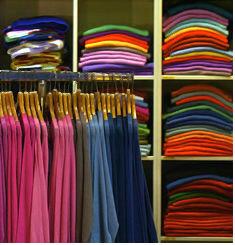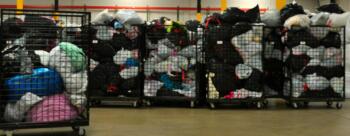Recycling: A Fashion Statement?
 Princess Catherine and a few other celebrities were recently lauded for the "recycling" of their wardrobes because they were seen wearing something they had already worn in public. Really? This is being called "recycling"? One of the definitions of wardrobe, according to Merriam-Webster is "a collection of clothes that a person owns or wears." Perhaps that statement should also read, "more than once." So, why applaud Princess Catherine (or Jennifer Aniston or anyone else for that matter) for wearing what she already owns? In a world where disposable fashion is encouraged, when a celebrity or even a princess <gasp> wears an item they have worn ONCE before, it is a newsworthy event. If this is recycling, then shouldn't 99% of us be in the news EVERY SINGLE DAY?
Princess Catherine and a few other celebrities were recently lauded for the "recycling" of their wardrobes because they were seen wearing something they had already worn in public. Really? This is being called "recycling"? One of the definitions of wardrobe, according to Merriam-Webster is "a collection of clothes that a person owns or wears." Perhaps that statement should also read, "more than once." So, why applaud Princess Catherine (or Jennifer Aniston or anyone else for that matter) for wearing what she already owns? In a world where disposable fashion is encouraged, when a celebrity or even a princess <gasp> wears an item they have worn ONCE before, it is a newsworthy event. If this is recycling, then shouldn't 99% of us be in the news EVERY SINGLE DAY?
 Let's put it in perspective. Did you know the average American throws away 70 pounds of clothes per year? Or, that an average household throws away 200 pounds of clothes per year? And, that only 15% of the clothes and shoes that are discarded each year get recycled? The other 85% ends up in landfills and incinerators. This disposal process causes the emission of greenhouse gases, which in turn harms the environment. And, producing new clothes causes more environmental damage. Producing a single cotton t-shirt consumes about 700 gallons of water and uses 0.02 pounds of pesticides. Think about it: one T-shirt. How many T-shirts do you think Princess Kate owns? And how many do you own? And more importantly, how many do you actually wear - or have worn more than once?
Let's put it in perspective. Did you know the average American throws away 70 pounds of clothes per year? Or, that an average household throws away 200 pounds of clothes per year? And, that only 15% of the clothes and shoes that are discarded each year get recycled? The other 85% ends up in landfills and incinerators. This disposal process causes the emission of greenhouse gases, which in turn harms the environment. And, producing new clothes causes more environmental damage. Producing a single cotton t-shirt consumes about 700 gallons of water and uses 0.02 pounds of pesticides. Think about it: one T-shirt. How many T-shirts do you think Princess Kate owns? And how many do you own? And more importantly, how many do you actually wear - or have worn more than once?
Beyond the environmental argument, let's think about this: our global demand for "wear-once" fashion is killing people. In Bangladesh last April, the Rana Plaza, an eight-story commercial building containing clothing factories collapsed after repeated warnings that the building was structurally unsound. It is now considered to be the deadliest garment-factory accident in history. More than 1100 people died and 2500 were injured. To add insult to injury, just last week, the International Labor Organization chaired a meeting in Geneva of retailers and clothing brands to discuss setting up funds to compensate the workers in Bangladesh. Attendees included Zara's Inditex and Britain's Primark, but noticeably absent were Wal-Mart, Benetton and Mango. Due to divisions as to how to solve this and other safety issues, the talks failed.
The reality is that in a country where nearly 4 million garment workers are employed by the clothing production industry, earning about $38/month, who can't afford the garments they produce. And they probably wear second-hand clothes to go to work. According to the Bangladesh government, this year garment exports increased 13% to $21.5 billion, 60% headed to Europe and 23% to the United States.
I guess I need to go buy a new T-shirt.
